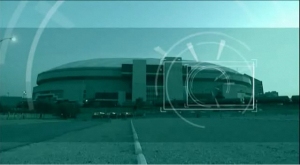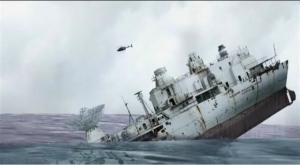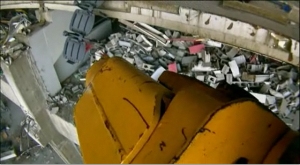VFX compositing for a 3D documentary: compiling a demo
As we prep to shoot our first 3D documentary, our compositor, Jakub Kuczynski, is getting ready to produce 3D VFX for the show.
We use these photo-real visuals in the explosive demolition series Blowdown, which we’ll be filming the next episode of, mostly for:
1) Locators – help orient the audience and show where the crew is working at a particular point.
2) Disaster scenarios – show the audience what will happen if different aspects demolition plan go wrong.
3) Dynamic structure shots – fly-overs, fly-throughs, fly-ins … allows audience to experience the strength, grandeur and engineering prowess of structures that Controlled Demolition Inc. implodes.
Here are two examples from previous shows: Super Stadium and Spyship:
Locator VFX: RCA Dome. Indianapolis, Indiana

Disaster scenario VFX: Hoyt S. Vandenberg. Key West, Florida

As part of this process, Jakub’s generating sample 3D VFX shots so we can assess them and so I can take some on my trip to meet with broadcasters the week after next.
We’ll combine the 3D VFX clips with some of the 3D test footage we’ve shot so I can give the broadcasters a solid visual idea of what we’ve developed so far.
One of Jakub’s shots – a fly-in to pyramids.
Why I’m including this in the 3D demo:
Look forward to the final.


